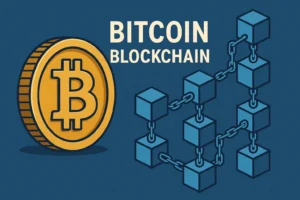Ethereum Virtual Machine EVM-Compatible Chains still rule distributed application (dApp) ecosystems in the fast changing realm of , therefore enabling smooth interoperability and cross-chain development. By on-chain activity, the top-performing EVM chains as of mid-2025 expose interesting new perspectives on user preferences, developer adoption, and transaction throughput. While creative networks like IOTA and Scroll are becoming major players in this growing environment, the most recent statistics indicates BNB Chain’s top position.
Recognising EVM Chains and On-Chain Metrics
Understanding what classifies a blockchain as an EVM-compatible chain is absolutely vital before diving into the rankings. Using the same bytecode and programming languages—Solidity and Vyper among others—an EVM chain is one that can run Ethereum-based smart contracts. This interoperability speeds adoption by letting developers use Ethereum-native dApps on other networks with little change needed.
Daily transaction count, gas usage, active wallet addresses, smart contract installations, and total value locked (TVL) are just a few of the data included in on-chain activity. These markers taken together show the vitality and usefulness of a network. Tracking these indicators enables developers, investors, and businesses—as the DeFi, NFT, and GameFi sectors develop—which ecosystems provide the most reliable and scalable infrastructure.
BNB Chain Continues to Rule in Transaction Count
By transaction volume, the BNB Chain—formerly Binance Smart Chain—has become rather clear as the most active EVM-compatible network. Using low fees, great throughput, and a solid developer base, BNB Chain routinely does millions of daily transactions. Binance’s enormous user base, effective tokenomics, and wide exchange integrations help to explain both its popularity among retail customers and DeFi developers.

Apart from raw transaction count, BNB Chain offers a wide range of dApps including PancakeSwap, Venus, and Alpaca Finance, which still draw notable user interaction and liquidity. Even as Ethereum keeps releasing its own Layer 2 solutions, the latest inclusion of opBNB, a Layer 2 scaling solution created utilising the Optimism Stack, has significantly lowered transaction costs and enhanced scalability maintaining BNB Chain’s competitiveness.
Ethereum Still the Smart Contract Standard
Originally the smart contract platform, Ethereum continues to be a powerhouse in terms of on-chain value and smart contract deployment. Ethereum Mainnet’s Layer 2 ecosystem, which includes Arbitrum and Optimism, has absorbed most of this demand even if petrol fees there can be exorbitant at peak activity. While providing quicker and less expensive transactions, these scaling options keep EVM compatibility.
Still unequalled is Ethereum’s supremacy in DeFi and NFTs. Mostly still running on Ethereum, major protocols such Uniswap, Aave, and MakerDAO were born on Ethereum. Ongoing attractiveness of Ethereum has come from institutional adoption, its switch to Proof of Stake (by Ethereum 2.0), and strong security mechanism.
Polygon Expands Utility Through zkEVM
Polygon Uses More Than One Polygon has carve-out a niche by providing a suite of scaling solutions including Polygon PoS, Polygon zkEVM, and Polygon CDK (Chain Development Kit) using zkEVM and Enterprise Partnerships. With zero-knowledge roll-ups improving privacy and scalability while attaining excellent EVM compatibility, the zkEVM—zero-knowledge Ethereum Virtual Machine—is especially remarkable.
Polygon distinguishes itself with solid corporate alliances. Working on NFT and loyalty programs with Nike, Reddit, and Starbucks has helped it to become a favourite among mainstream companies. Polygon’s emphasis on both technological scalability and commercial adoption sets it among the top EVM chains by on-chain activity, given increasing TVL and a consistent stream of active users.
Avalanche with Multiverse Expansion & Subnet Architecture
Avalanche has ascended the ranks by using a distinctive subnet design that lets developers build customisable blockchains fit for particular use cases. Particularly in the DeFi and GameFi markets, its C-Chain, an EVM-compatible smart contract platform, finds great activity.
Encouragement of developers to create subnets and increase dApp capability comes from the $290 million Avalanche Multiverse incentive scheme. Users moving from other ecosystems will find simple onboarding guaranteed by the C-Chain’s compatibility with MetaMask and other Ethereum utilities. Recent integrations with Chainlink and alliances with companies like Deloitte highlight Avalanche’s goal to support retail and business use cases even more.
EVM Integration Marks a Paradigm Change by IOTA
Originally well-known for its feeless Directed Acyclic Graph (DAG)-based design, IOTA has made a big move by including EVM compatibility via the IOTA EVM release on its staging network. This action combines the composability of Ethereum-based smart contracts with the advantages of the IOTA Tangle, such great scalability and no transaction costs.
IOTA EVM creates fresh options for developers by tying IOTA’s current data and IoT-oriented use cases with the larger DeFi and dApp environment. Early initiatives targeted on machine-to—-machine payments, distributed identities, and real-time data monetisation have already drawn the chain. The hybrid design of the IOTA ecosystem could challenge established ideas of blockchain scalability and utility as it develops.
Scroll Enter the Arena with zkRollup-Powered EVM Compatibility
Among the newest players in the EVM chain rankings is Scroll, a Layer 2 zkRollup solution that just debuted on its mainnet. Designed to facilitate flawless migration of Ethereum-native dApps while providing notable scalability and transaction cost efficiency, Scroll is built to tightly reflect Ethereum’s architecture.
The major value propositions of Scroll are their considerable focus on cryptographic security and developer-friendly surroundings. The open-source development approach of the protocol and partnerships with Ethereum Foundation experts have attracted notice. Rising TVL and growing dApp adoption mean Scroll will be increasingly important in the next phase of Ethereum scaling.
Comparative Scene and Developing Patterns
Comprising the cross-section of the larger Web3 ecosystem, the top six EVM chains—BNB Chain, Ethereum, Polygon, Avalanche, IOTA, and Scroll—represent From low costs and great throughput to increased privacy and fresh architecture, every network offers special advantages.
Emerging patterns show Layer 2 solutions, zk-based scaling, and enterprise blockchain acceptance converging. These networks are also positioning themselves to support both compliant and distributed uses as legislative clarity rises across important countries including the European Union, United States, and Southeast Asia.
Using multi-chain approaches, which distribute across numerous EVM-compatible networks to maximise reach and reduce risk, developers and investors are choosing these more and more. This composability guarantees that no one network has to monopolise all use cases—rather, they can coexist inside an interconnected ecosystem enabled by bridges, oracles, and cross-chain communication protocols.




